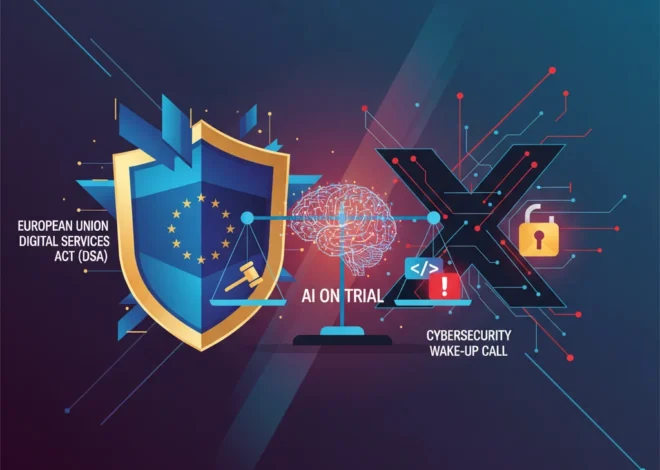
The Shadow War: Did China Steal UK Secrets, and What Does It Mean for Your Startup?
It sounds like the opening scene of a spy thriller. A former top government advisor, shrouded in controversy, makes a bombshell claim: a hostile foreign power has infiltrated the highest levels of government and siphoned off “vast amounts” of secret data. The government, in turn, issues a swift, terse denial. This isn’t fiction; it’s the real-life drama unfolding in the UK, with Dominic Cummings, Boris Johnson’s former chief aide, alleging a catastrophic Chinese intelligence breach, and the Cabinet Office flatly rejecting the accusation as having “no evidence.”
According to the BBC’s report, Cummings claimed that Beijing had successfully obtained huge caches of classified information. The Cabinet Office retorted, stating, “We have robust systems in place to protect the security and integrity of our IT systems.”
While Westminster engages in this high-stakes game of “he said, they said,” it’s easy for those of us in the tech world—developers, entrepreneurs, and startup founders—to dismiss it as political noise. But that would be a grave mistake. This single headline, regardless of its ultimate truth, is a stark reminder of the invisible, persistent digital war being waged every second of every day. It’s a war where the front lines are not on a battlefield, but in our data centers, our cloud infrastructure, and our very codebases. The prize isn’t just state secrets; it’s your intellectual property, your customer data, and the core of your innovation.
This isn’t just about government cybersecurity. It’s about the fundamental security of the digital economy. Let’s unpack what this alleged breach signifies for the broader tech landscape and, more importantly, what you can do to protect your own digital assets in an increasingly hostile environment.
Understanding the Battlefield: State-Sponsored Cyber Espionage
What Dominic Cummings alleges is a classic case of state-sponsored cyber espionage. This isn’t the work of a lone hacker in a basement. These are sophisticated, well-funded operations conducted by or on behalf of a national government to achieve strategic, economic, or political objectives. Their resources are virtually limitless, and their patience is legendary.
The motives are varied but often converge on one thing: gaining an advantage. This can mean:
- Economic Espionage: Stealing trade secrets, proprietary algorithms, and cutting-edge research from innovative companies to bolster their own domestic industries. For a startup, this is an existential threat.
- Intellectual Property Theft: Siphoning source code for groundbreaking software, blueprints for new hardware, or the chemical formula for a new material.
- Political Intelligence: Gaining insight into a foreign government’s strategies, negotiations, and internal politics.
- Destabilization: Causing chaos by disrupting critical infrastructure, from power grids to financial markets.
The attackers employ a terrifyingly advanced toolkit. They leverage zero-day exploits (vulnerabilities in software unknown to the vendor), sophisticated phishing campaigns powered by artificial intelligence to create hyper-realistic lures, and supply chain attacks, where they compromise a trusted piece of software or a SaaS provider to gain access to all its clients. The infamous SolarWinds hack is a prime example, where a breach of one company gave attackers a backdoor into thousands of government agencies and private corporations (source).
Teenage Hackers vs. The Hospital: Why the Kido Arrests Are a Critical Cybersecurity Wake-Up Call
The Ripple Effect: Why National Security Breaches Matter to Your Business
It’s tempting to think, “We’re just a small startup; why would a foreign government care about us?” This is dangerously naive. State actors are increasingly targeting small to medium-sized businesses for two key reasons: they are often seen as softer targets with less robust cybersecurity, and they are frequently part of the supply chain for larger, more valuable targets.
Consider the cost. The average cost of a data breach in 2023 reached an all-time high of $4.45 million, according to a report by IBM (source). For a fledgling startup, such a cost isn’t just a setback; it’s a death sentence. The damage isn’t just financial. It’s the loss of customer trust, the theft of the very innovation that makes your company unique, and the potential legal and regulatory fallout.
Your reliance on modern tech stacks—cloud services, third-party APIs, and open-source libraries—creates a vast attack surface. Every line of programming, every dependency in your software, and every SaaS platform you integrate with is a potential entry point. The same tools that enable rapid growth and scalability also introduce complex security challenges.
To put the threat landscape into perspective, here’s a simplified breakdown of common threat actors and their motivations.
| Threat Actor Type | Primary Motivation | Common Tactics | Typical Targets |
|---|---|---|---|
| State-Sponsored Groups | Espionage, IP Theft, Disruption | Advanced Persistent Threats (APTs), Zero-Day Exploits, Supply Chain Attacks | Governments, Critical Infrastructure, Tech & Research Firms |
| Cybercriminals | Financial Gain | Ransomware, Phishing, Data Exfiltration for Sale | Any organization with valuable data or ability to pay ransom |
| Hacktivists | Political/Social Agenda | DDoS Attacks, Website Defacement, Data Leaks | Organizations opposing their ideology |
| Insider Threats | Revenge, Financial Gain, Coercion | Data Theft, Sabotage, Credential Abuse | The employee’s own organization |
From Reactive to Proactive: Building Your Digital Fortress
The threat is real, persistent, and sophisticated. So, what can you do? Sitting back and hoping for the best is not a strategy. A proactive, defense-in-depth approach is essential for survival.
For Developers and Tech Professionals: Security is Your Job Too
The era of writing code and “throwing it over the wall” to a security team is over. The DevSecOps movement integrates security into every phase of the software development lifecycle. This means:
- Secure Programming Practices: Writing code that is inherently resistant to common vulnerabilities like SQL injection, cross-site scripting, and buffer overflows.
- Dependency Scanning: Using automation tools to continuously scan the open-source libraries and components in your projects for known vulnerabilities.
- Threat Modeling: Proactively thinking like an attacker to identify and mitigate potential weaknesses in your application’s design before a single line of code is written.
- Automated Security Testing: Integrating static (SAST) and dynamic (DAST) analysis tools into your CI/CD pipeline to catch vulnerabilities automatically.
All In: Why the U.S. Economy is Making a Trillion-Dollar Bet on AI
For Entrepreneurs and Startups: Weaving Security into Your DNA
For a startup, agility is key, but moving fast shouldn’t mean breaking security. Build a culture of security from day one.
- Embrace Zero Trust: This security model operates on the principle of “never trust, always verify.” It means every user and device must be authenticated and authorized before accessing any resource, regardless of whether they are inside or outside the network perimeter.
- Vet Your Vendors: Your security is only as strong as your weakest link. Scrutinize the security practices of your cloud hosting provider, your CRM, and every SaaS tool your team uses.
- Employee Training: The human element is often the most vulnerable. Regular, engaging training on how to spot phishing emails and practice good cyber hygiene is one of the highest-return investments you can make.
The AI Arms Race: Using Machine Learning as a Shield
Just as attackers use AI to enhance their attacks, defenders are harnessing the power of machine learning to build smarter, more adaptive defenses. Modern cybersecurity platforms use AI to:
- Detect Anomalies: ML algorithms can learn the baseline of “normal” behavior on your network and instantly flag deviations that could signal an intrusion.
- Identify Novel Threats: AI can analyze the characteristics of new malware and identify it even if it’s never been seen before, a crucial defense against zero-day attacks. According to one study, AI-powered threat detection can identify threats up to 60 times faster than manual methods (source).
- Automate Response: When a threat is detected, an AI-driven system can automatically take action, such as isolating a compromised device from the network, to contain the damage in milliseconds.
The Code of Life: What the Nobel Prize in Medicine Teaches Tech About Self-Regulation and AI
The Unseen War Has Real Consequences
The back-and-forth between Dominic Cummings and the UK Cabinet Office is more than just political theater. It’s a public crack in the facade of a silent, global conflict that impacts every person and every business operating online. Whether China successfully breached the UK government’s systems is a question that may never be publicly answered with certainty.
But the bigger lesson is undeniable. We live in an age where your company’s most valuable assets are digital, and the threats against them are more sophisticated and well-resourced than ever before. For the tech community, the path forward isn’t about fear; it’s about awareness, preparation, and a relentless commitment to building a more secure and resilient digital future. The shadow war is real, and the first step to winning is acknowledging you’re on the battlefield.


